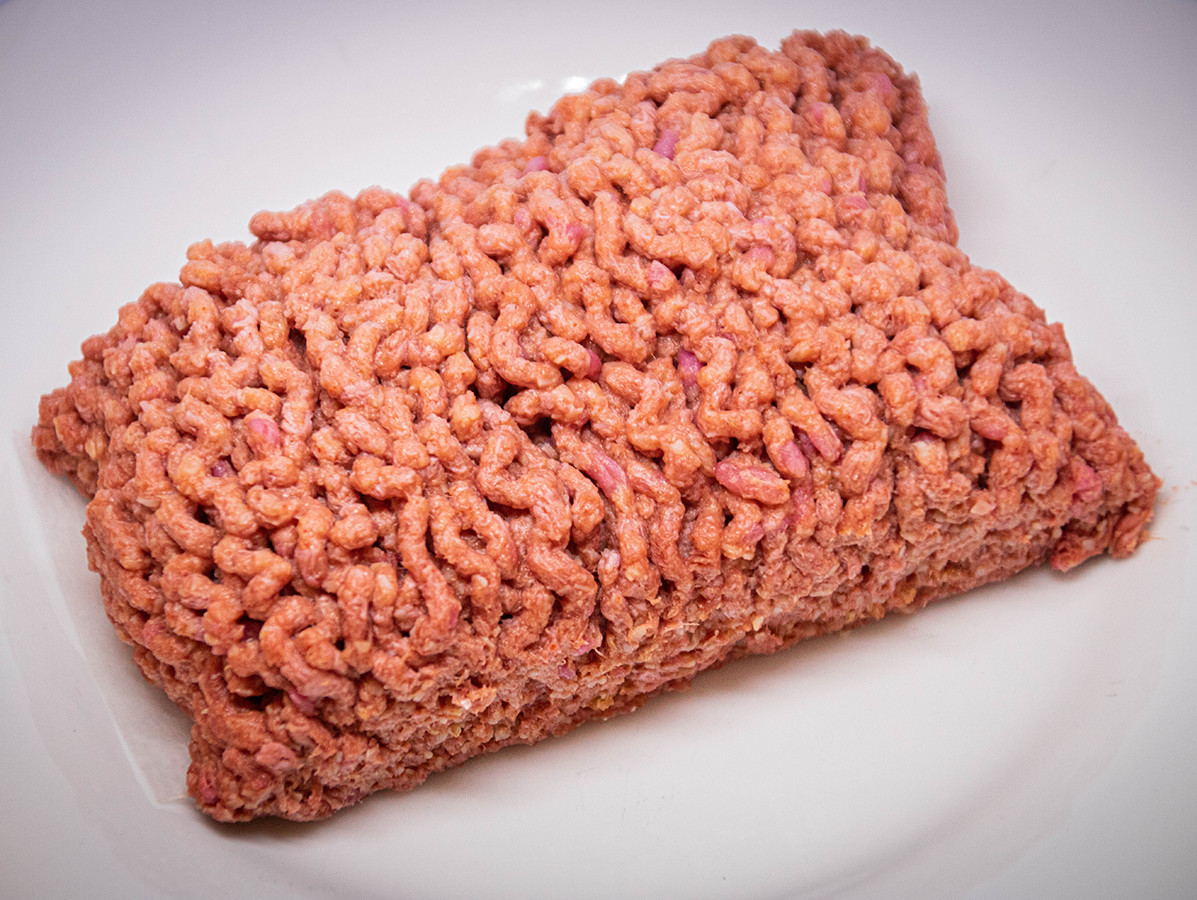
At TOP BV in Wageningen they succeeded in making a really good vegetarian burger. The next brainteaser? "Whole muscle meats!"
If you don't realise that something is going on in the meat sector (or should we say: protein sector?), you really haven't been paying attention lately. Nevertheless, according to Oscar Hoogland, food technologist at TOP BV in Wageningen, we are still very much at the beginning of the transformation to more vegetarian varieties of meat. At TOP BV they are working hard day in and day out to help shape this transformation. Hoogland keeps us up to date with developments.
"As long as vegetarian products are twice as expensive, average families with children will not be putting them in their shopping trolleys.
"First of all, we're an advisory company. We have a wide range of consulting clients, from start-ups that want to scale up to business concerns that are more difficult to innovate due to their cumbersome nature. It ranges from developing new recipes to building entire factories. We therefore have a very mixed team of people, from mechanical engineers to microbiologists. I dare say that we can help with anything."
"In addition, we ourselves invest in innovations that we see as promising. You name it, out of both substantive and business interest. Such investments can, for example, lead to a product or a technology. We place an innovation of this kind into a separate company, which we may sell. A recent example is Phytonext, a company that has developed an extraction technology. The technology extracts raw materials from vegetable residues in a high-quality - and efficient way. For example, beta-carotene from carrot pulp that remains after the production of carrot juice".
"About 15 years ago we saw the market potential of vegetarian products. Not by focusing on hardcore vegetarians, but by creating something that is attractive to meat eaters. TOP BV was one of the first to take part. It led to the success story of Ojah (based in Ochten, ed.) which developed a product that is very similar to chicken fillet (brand name: Plenti, ed.). The Vegetarian Butcher was our launching customer, we sold the company four years ago. Now it is time for the next step. We made those chicken structures, the market is growing, so it is safe to invest further."
"That's right, yes. And frankly, we at TOP BV also participate in that. We are now on the point that our burgers and our minced meat are ready for the supermarket - and those products are really top of the bill, but our sausages have not yet reached the point where we are content with them. I also believe that there is room for new products. We are on the eve of the new battle being fought: the vegetarian variant of 'whole muscle meats' (WMM). Vegetarian products that do have that characteristic muscle structure of meat".

" Not even on a third. But the flywheel effect will soon occur. With WMM, a world is opening up for us. Because in theory you can also process it into meat products.
"There are computer models that say the demand for vegetarian meat will be about as high as the demand for meat itself. But will they remain - as they are today - two different shelves? Meat with meat and veggie with veggie? My personal hope is that it will be offered interchangeably. Meat burgers with vegetarian burgers and so on'."
"Consumers are concerned about the world and often have good intentions, but once in the supermarket, they get overexcited. That is the paradox of free choice, because out of habit he walks back to the meat rack and grabs that meat burger. The vegetarian sector is also intimidating, because we do not know how it works. However, if the consumer reaches for the beef burger, he is more likely to switch to vegetarian meat if it lies next to it. The same applies to the minced meat he needs for his lasagna. The condition, of course, is that the vegetarian meat in the pan reacts in the same way as real meat. And it has to look just as attractive as real meat".
"Certainly. We are discussing whether it makes sense to market products under private labels or under A-brands. On the one hand, it is a proven strategy to attract consumers with a brand. On the other hand, meat in the supermarket is hardly if ever 'branded'. So it could be very valuable to brand it in the same way as regular meat. Albert Heijn packs its meat in a very attractive way. How nice would it be if you packed your vegetarian varieties in the same style and put them on the shelf".
"All those things. But we will figure that out, because that's exactly what we do. With our club of 20 people we develop through and through, until we are satisfied. The texture just has to be absolutely right. The right fat structure is super important. Fat tissue is animal fat caught in collagen, so that's where the challenge lies".
"Another challenge for us is the supply chain. Of course we can't tackle that on our own. But we are in a subsidy process with a number of partners to see how it can be improved".
"As long as a vegetarian product is twice as expensive, a mother with children does not put it in her trolley. That price difference lies concealed in the supply chain. The smaller the scale, the more expensive it becomes. We need to move towards an economy of scale. Meat is bizarrely cheap. That efficiency has yet to be made with vegetarian meat".
Scoop! Stop the presses!
Oscar Hoogland of TOP BV was able to report a real first just before this edition of Vakblad Voedingsindustrie went to press. TOP recently filed a patent application for a way to use vegetable fats to imitate the structure of animal fat tissue. Hoogland: "We have worked hard on this last year and in the coming period we will be experimenting with the processing of these structures in meat substitutes. This is a very promising platform that really brings us one step closer to truly convincing meat substitutes".
www.top-bv.nl
Pictures: © TOP BV
Source: Vakblad Voedingsindustrie 2020